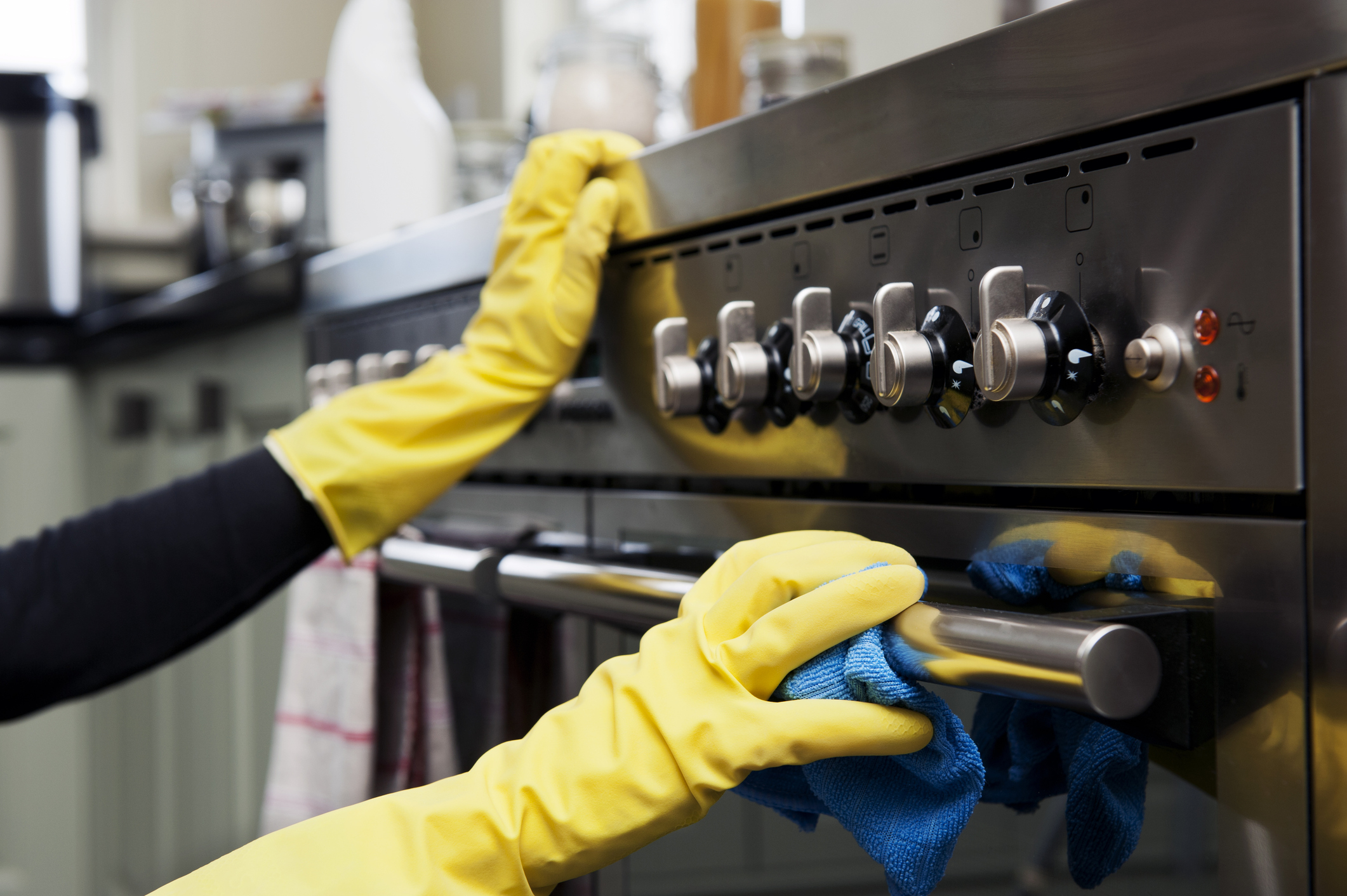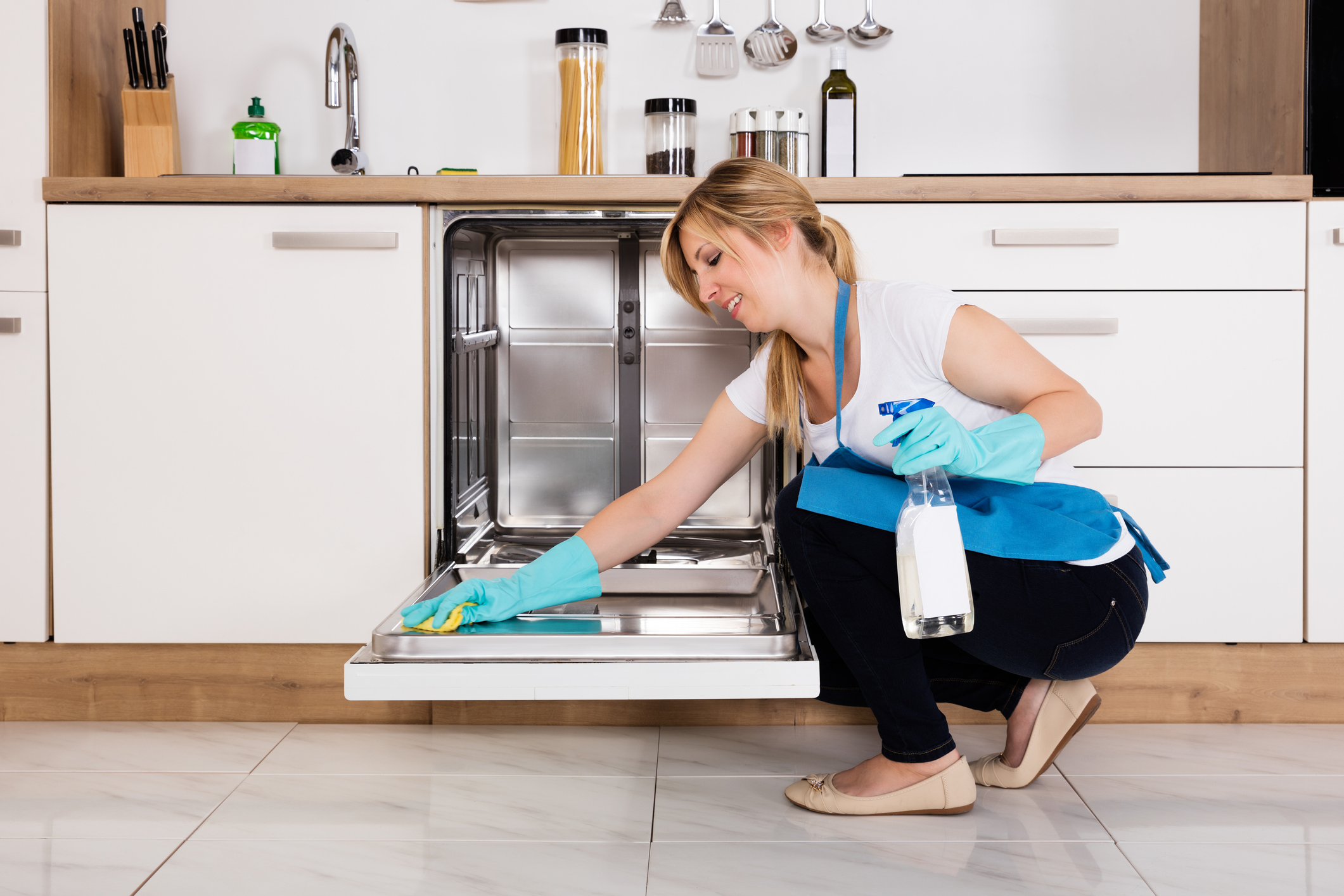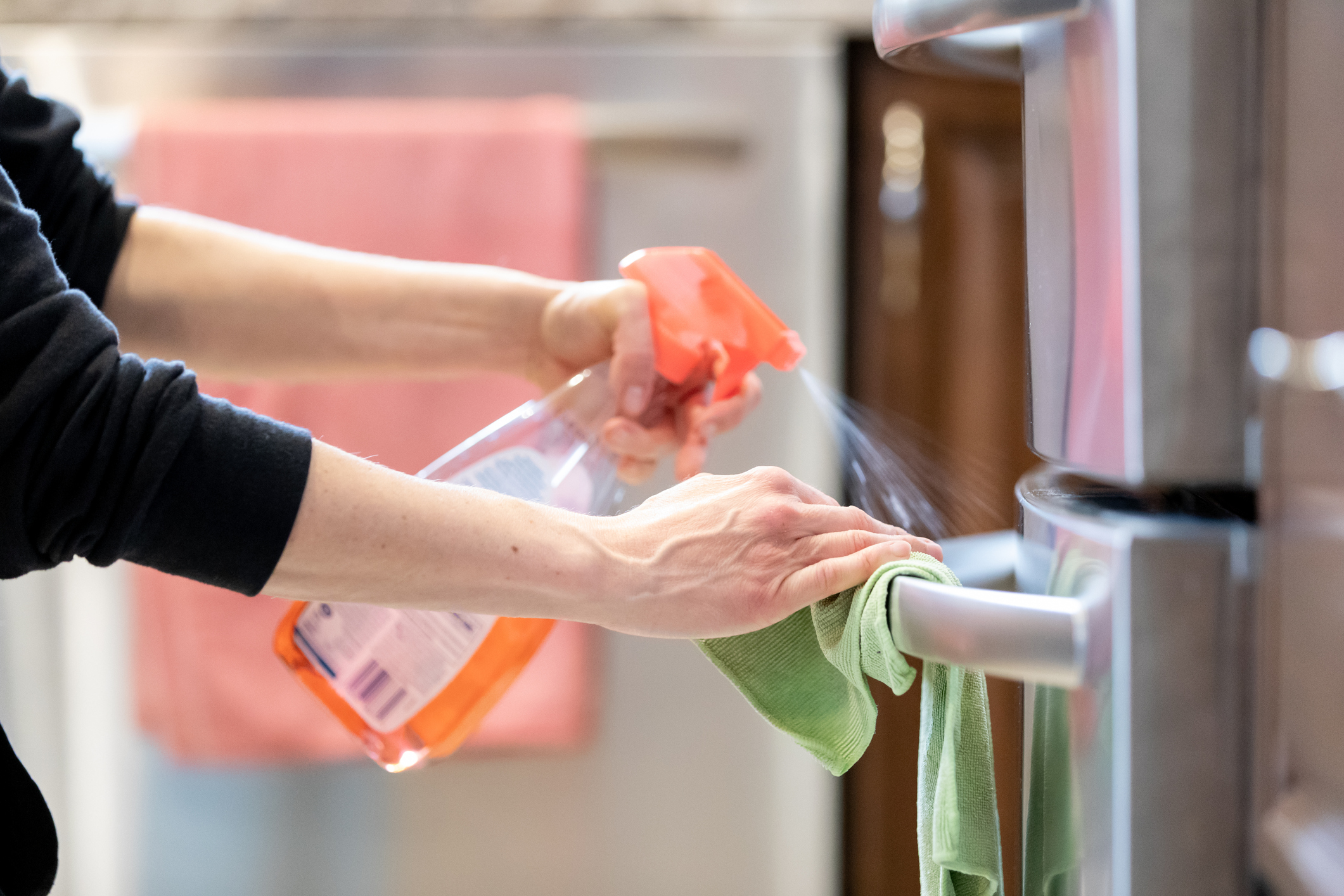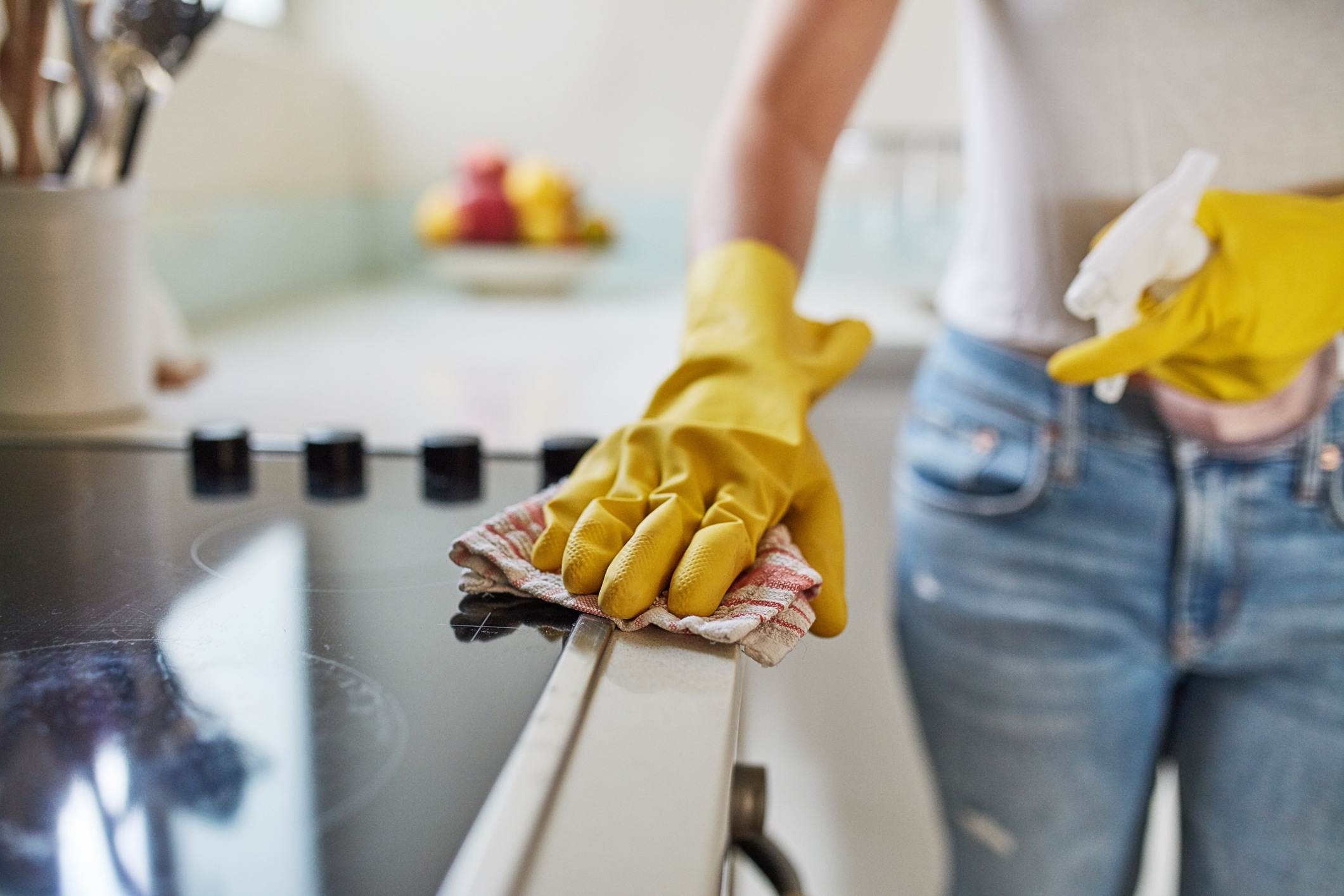How To Clean The Stainless Steel Appliances
Stainless steel remains a popular appliance finish in many household kitchens. It isn't hard to imagine why, but stainless steel does require plenty of routine upkeep to retain that sleek and shiny gloss. When you first purchase a brand-new fridge, dishwasher, range, or wall oven, it has a pristine glow and instantly illuminates your kitchen. However, after a few days, stainless steel becomes a magnet for grubby fingerprints, water spots, and spills that cause your appliances to lose their luster.
Luckily, with a little love and care, your stainless-steel appliances can look good as new again. If you remember our blog on the "dos and don'ts" for washing dishes, we highlighted a section on stainless-steel cookware. We wanted to revisit this idea once more with a focus on your kitchen space and stainless-steel appliances. If you think you've been cleaning your appliances incorrectly, this guide will help set you straight. Follow these simple "Dos and Don'ts" to protect your appliances and save time in your kitchen clean-up routine.

"Dos"
First up to bat, we'll start with the proper cleaning techniques. Unlike other kitchen surfaces, stainless steel is easy to clean. It requires regular maintenance, but it's simple enough to wipe away any unwanted streaks or smudges. It might take a little elbow grease to remove oil residue left behind from our fingertips, but there are all sorts of at-home cleaning solutions you can use that are effective and safe to use on your appliances.
Refer to the User Manual
Before you spiff up your kitchen appliances, take a look at the user manual to see if there are any cleaning instructions or recommended cleaning sprays or polishes. You'll find plenty of oil-based stainless-steel polish at the store, and while it looks great for a while, it gathers dust and leaves a dirty film over time. There may be a list of store-bought cleaning products that are safe to use on stainless steel, but if there are no specific cleaning solutions listed, invest in some do-it-yourself cleaning options.
Use Safe DIY Cleaning Solutions
An at-home cleaning solution is a simple and cost-effective way to clean your appliances. There are a few different methods to properly clean stainless steel, but these are our three favorites.
NOTE: Before you wipe down your entire refrigerator, spot-test the method you want to try on a small section of your appliance to be sure it will get the job done.
1) Vinegar and Olive Oil
Supplies:
- Distilled white vinegar (in a spray bottle)
- Olive oil
- Microfiber cloths that are gentle on stainless steel (never an abrasive like a Scotch-Brite pad)
Instructions:
- Examine your appliance to detect the "grain" in the metal. Clean with the grain.
- Spray the vinegar onto your appliance.
- Wipe away the vinegar in the same direction of the grain using your microfiber cloth.
- Use a separate cloth (a clean one) rub a small amount of olive oil onto the appliance. Again, work in the direction of the grain to prevent streaks. The olive oil will produce a shiny finish.
NOTE: If you don't have any olive oil on-hand, you can make a solution with 50 percent water and 50 percent white vinegar to give your appliances a squeaky-clean finish.
2) Dish Soap and Baby Oil
Supplies:
- Mild dishwashing liquid
- Baby oil
- Warm water
- Microfiber cloths (non-abrasive)
Instructions:
- In either your kitchen sink or a clean bucket, dilute the dishwashing liquid in warm water and mix well.
- Apply a small amount of the solution onto your microfiber cloth and spread evenly onto your stainless-steel appliance. Wipe with the grain to get rid of fingerprints and smudges.
- Allow for the appliance to dry.
- Use another clean cloth to apply baby oil to the metal; still working in the direction of the grain. The baby oil helps to restore the shiny, like-new appearance of your appliance.
3) Club Soda
Supplies:
- Club soda
- A spray bottle
- A microfiber cloth (non-abrasive)
Instructions:
- Fill the spray bottle with club soda.
- Spray the soda onto your appliance. Like the previous two cleaning methods, use a microfiber cloth to follow the metal's grain.

It isn't forbidden to clean stainless steel in a circular motion—it can actually help to hide scratches, but cleaning in the same direction as the metal's grain helps to reduce smudging. And all three of these cleaning solutions also help to restore the material's natural glossy shine.
Stainless steel cookware and kitchen sinks can withstand a bit more of a punch from slightly abrasive cleaning solutions to break down food particles and buff out deep scratches.
Be sure any stainless-steel items are cleaned immediately. If any cookware is left soaking for too long without being washed by hand, prolonged contact with anything salty or acidic can cause the glossy finish to become murky.
"Don'ts"
Not every technique is safe to use when cleaning stainless steel appliances. To prevent damage to the appliance's finish, avoid scouring powders, steel wool, bleach, and ammonia.
Don't Use Harsh or Abrasive Materials
Stainless steel is an incredibly durable material, but that doesn't mean you should be treating it with equally tough products. Powder, steel wool, bleach, and ammonia have too many abrasive properties which can easily scratch or discolor the appliance finish. These cleaning tools should always be avoided when cleaning stainless steel appliances.
And it's worth considering switching to distilled water to clean your appliances if your home runs on hard water. It won't damage steel by any means, but hard water is more likely to leave spots and streaks due to the amount of calcium in the water.

Don't Sweat It
If you don't have time to clean as often as you'd like, there's no need to stress. As we mentioned, stainless steel is a durable material; it's made to last. If your schedule doesn't allow for daily cleaning, weekly or even bi-weekly cleaning will suffice.
Now, if there's a spill or cooking-related mess, you'll want to take care of that right away, but simple touchups for aesthetic purposes can be done on your own time. If it helps, don't even set a schedule—it's easier to clean your appliances while you cook. If you happen to see a smudge, wipe your appliance down and give it a good polish.
Bonus: Fingerprint-Resistant Finish
These cleaning tips will help protect your appliances, but a little added coverage never hurt. Our fingerprint-resistant appliances allow you to easily wipe away smudges and fingerprints for a look that's always sparkling clean.
While you're cleaning the outside of the appliance, might as well pay some attention to the inside, too. If your refrigerator is looking like there might be a monster living inside, refer to our blog on fridge cleaning tips. If your dishwasher is leaving your dishes with an unpleasant odor, here are some tips to keep your dishwasher clean. And if you're feeling woozy from the smell of vinegar used in your homemade cleaning solutions, range hoods are the perfect solution for eliminating unwanted kitchen odors. Do you smell that? That's a breath of fresh air.

A Clean Kitchen is a Happy Kitchen
It's important to keep your appliances clean in-between meals and celebratory gatherings. If your kitchen is spotless, you and your appliances will sparkle and shine.
If your current appliances are looking too grimy and tarnished to clean on your own, it might be time for an upgrade. Experience that brand-new glisten and glow with kitchen appliances from Duerden's. We offer standalone appliance units and appliance package suites if you want to do your shopping in bulk.
We have everything you need for a clean and exemplary kitchen space. Give us a call, shop online, or visit us at Duerden's today.
How To Clean The Stainless Steel Appliances
Source: https://www.duerdensappliance.com/blog/cleaning-dos-and-donts-for-stainless-steel
Posted by: wakefieldthedis1939.blogspot.com

0 Response to "How To Clean The Stainless Steel Appliances"
Post a Comment